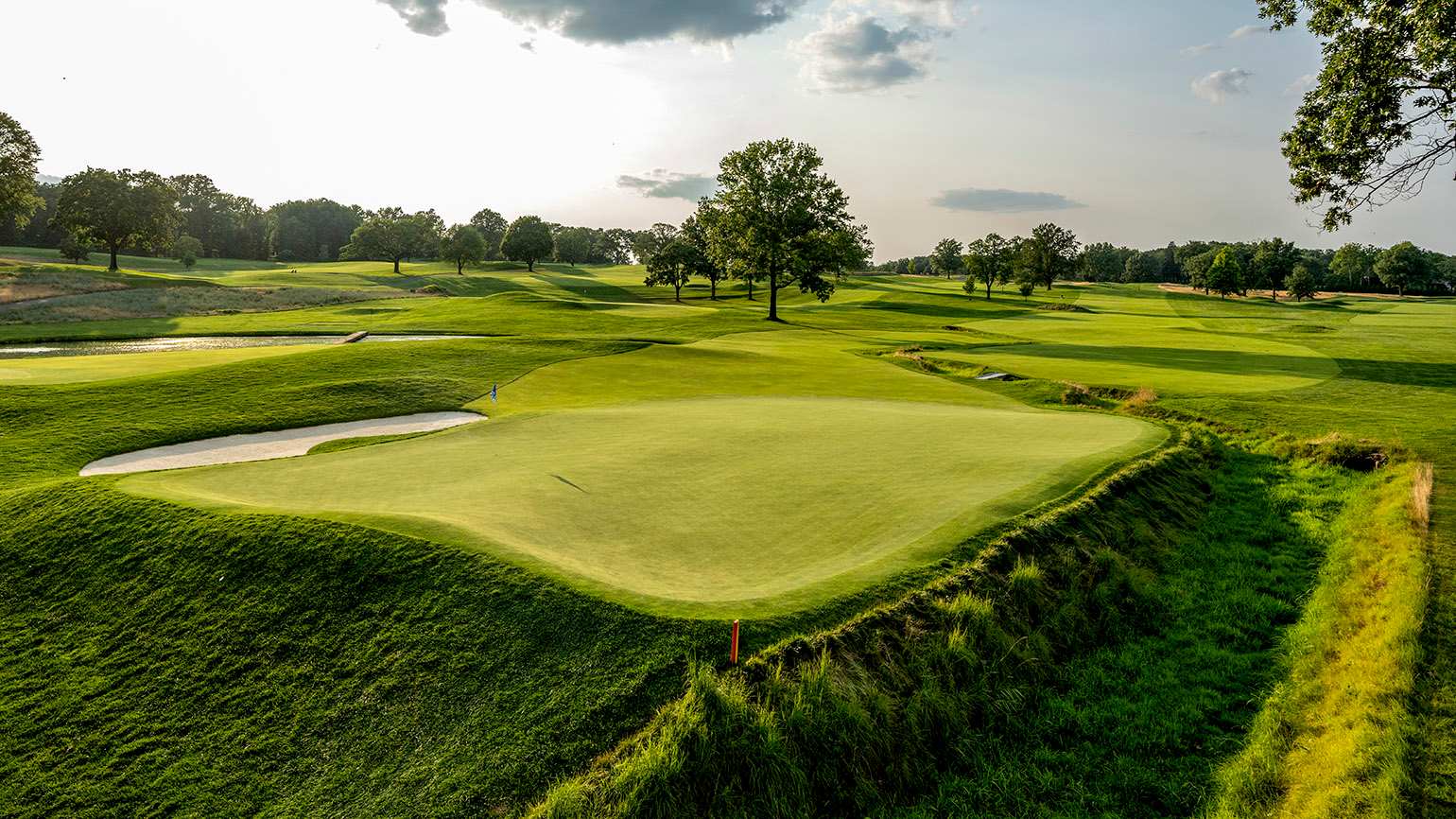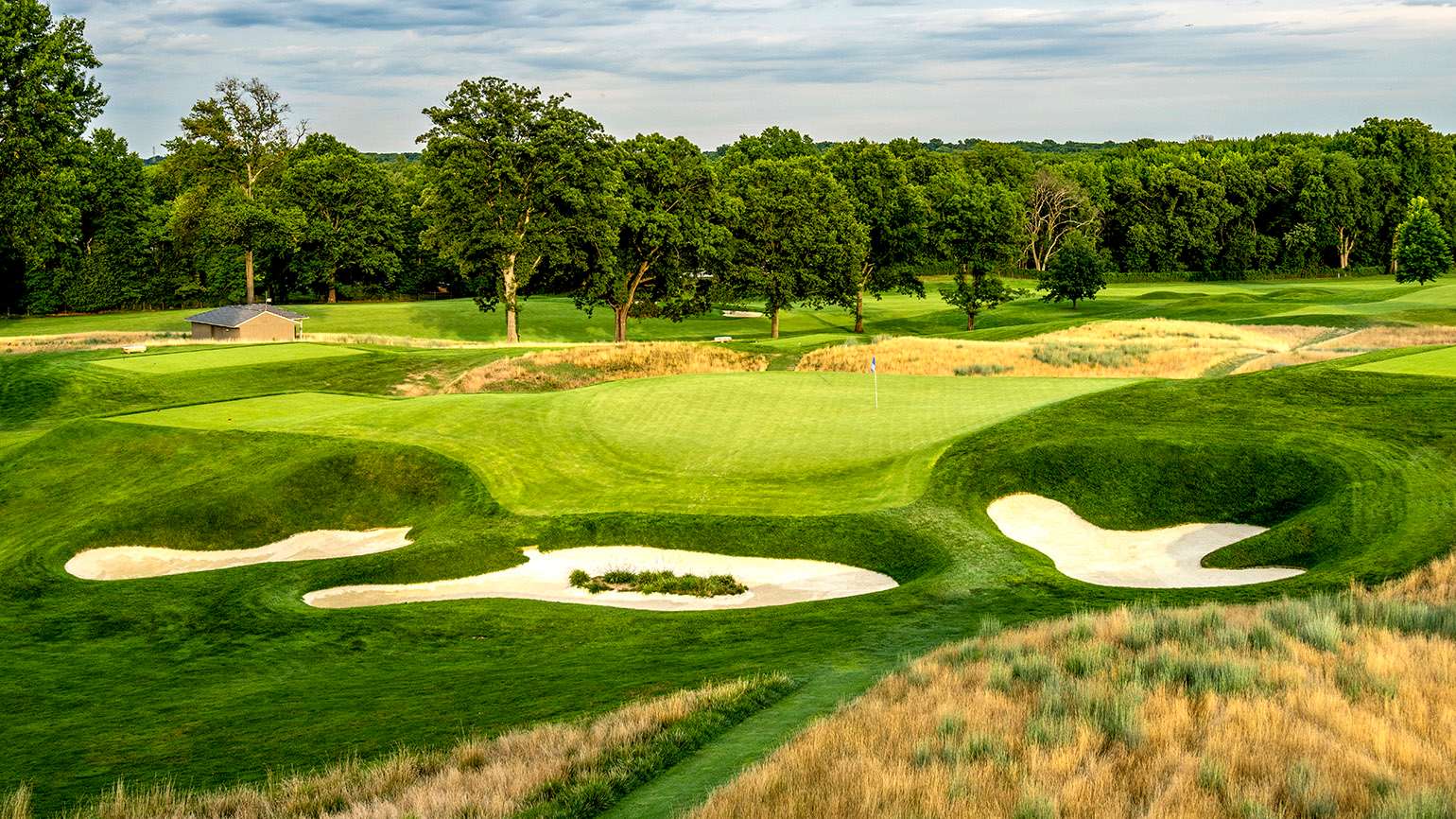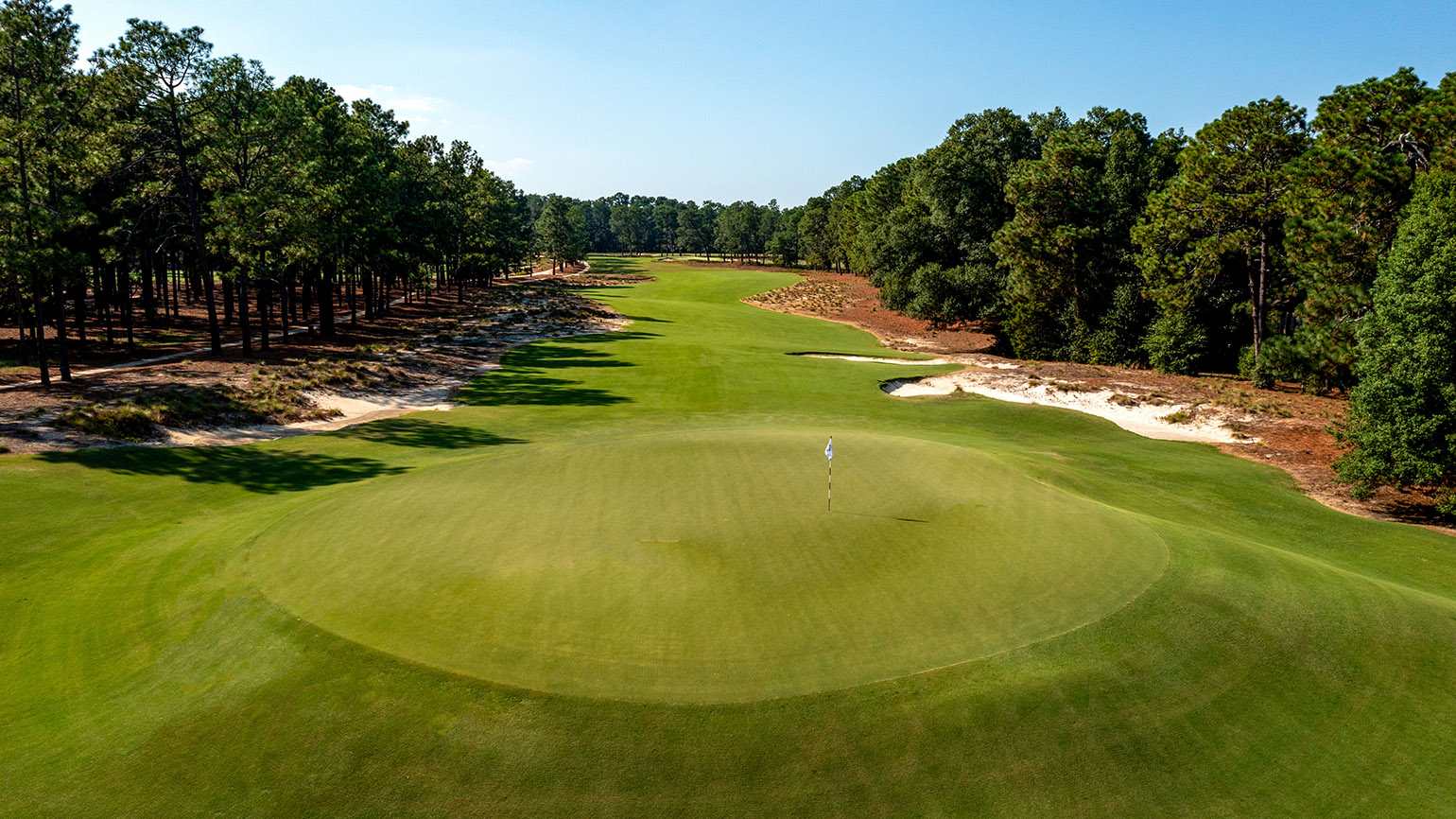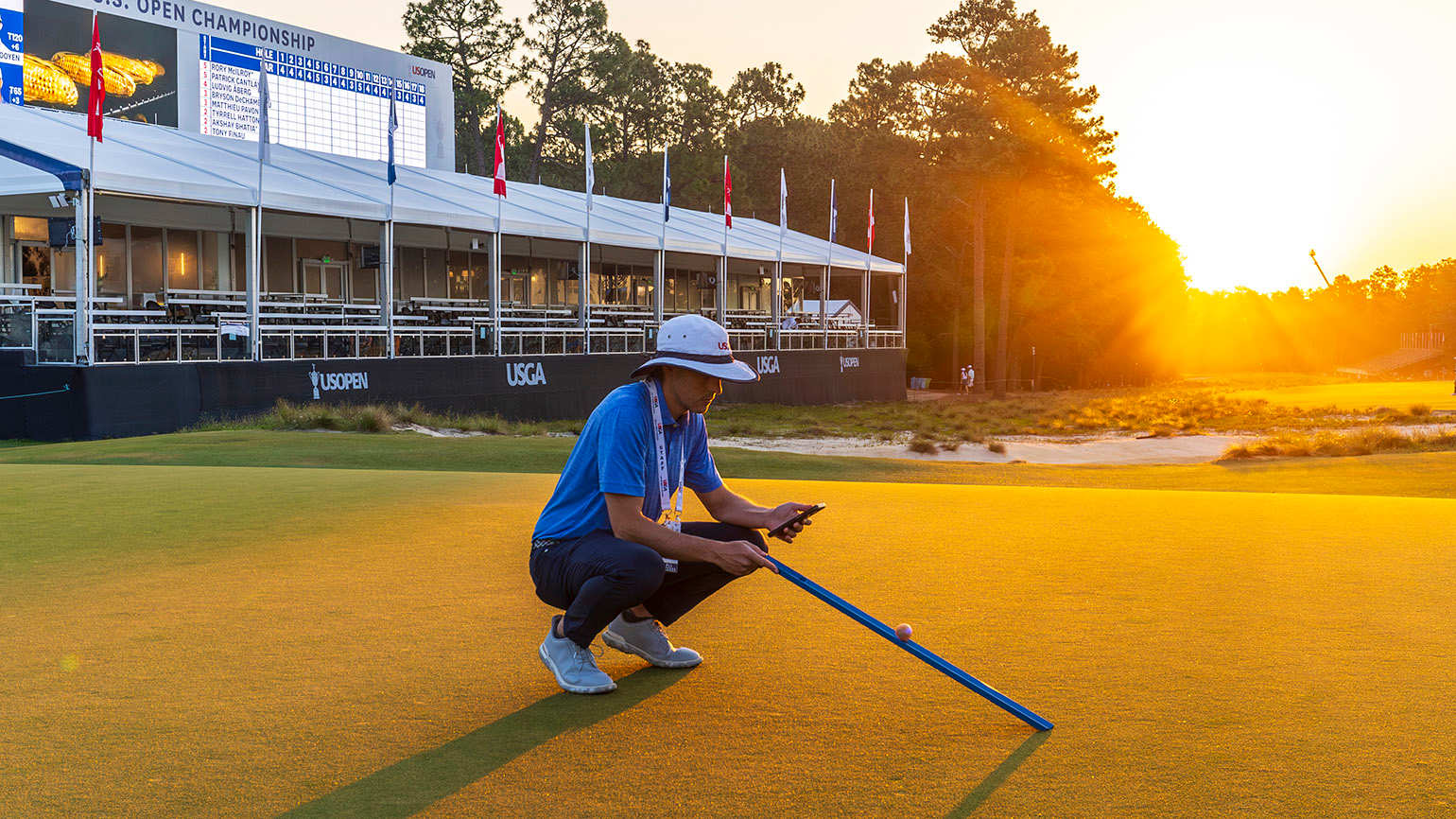The Enduring Championship Relevance of Donald Ross Designs
A century after the high point of his golf design work, Donald Ross maintains his status as an architect whose courses test the world’s best players. Quite a claim for someone who honed his craft in an era of hickory shafts and gutta-percha golf balls. Most of his 410 designs, redesigns and course expansions happened with an expected tee shot distance of about 200-225 yards and greens rolling at the equivalent of 4-5 feet on the Stimpmeter.
During the so-called “Golden Age of Golf Design” that occurred roughly between the two world wars, it was evident that Ross prevailed when it came to championship venues. Between 1919 and 1931, eight of 13 U.S. Opens took place on courses he designed. A quick look at the championship ledger of the last century confirms the ubiquity of his work. What started with the 1916 PGA Championship at Siwanoy Country Club in Bronxville, New York, continues apace. This year, his designs at Plainfield Country Club and Echo Lake Country Club will co-host the U.S. Amateur Four-Ball, and his East Course at The Broadmoor in Colorado Springs, Colorado, will host the U.S. Senior Open. That brings Ross’ championship total through 2025 to 195 events.
That list includes 20 U.S. Opens, 17 PGA Championships, 19 U.S. Women’s Opens, 14 U.S. Senior Opens, 21 U.S. Amateurs, 29 U.S. Women’s Amateurs, 14 U.S. Senior Amateurs and the list goes on! To that, we can add the 2026 U.S. Senior Open at Scioto Country Club in Ohio, the 2027 U.S. Women’s Open at Inverness Country Club in Ohio, the 2027 U.S. Women’s Amateur at Pinehurst No. 2, and the 2027 U.S. Women’s Mid-Amateur at the Country Club of Buffalo in Williamsville, N.Y.
So, what explains the enduring character of his work as a test of the world’s best golfers?
“His greens,” said Tyler Rae, a noted restorationist whose Ross work includes USGA championship venues like Beverly Country Club in Chicago, Brae Burn Country Club in Massachusetts, Cedar Rapids Country Club in Iowa and Northland Country Club in Minnesota.
Rae points to the scale, proportion and boldness of Ross’ putting surfaces. In an era of very little bulk earth moving, Ross was ever the parsimonious craftsman in focusing his attention on 3-4 acres of greens. His greens tend to be boldly presented fill pads, elevated slightly above native grade, with greenside bunkers some 3-5 feet deep to accentuate the character of the surface contours.
The bunkers intruding in front and alongside the greens usually create a bit of outlying green surface on the peripheries for tucked hole locations. Between those and the subtle shelves that he created on greens that usually tipped slightly from back to front, he created hole locations of varying difficulty that favored different angles of attack. His original fairways were often 50 yards across, with certain sides providing more-favorable lines of play for the approach depending on the location of the flag. It was less a matter of sheer distance off the tee and more a matter of tacking, as if golf were a form of sailing or chess.
Some of this element has been lost over the years as fairways have narrowed, both to accommodate irrigation and conform to modern notions of championship golf. Thankfully, more-varied setups have returned to Ross courses in recent years thanks to a restoration movement that has seen the playing character of many classic courses revived. Ross-designed championship venues like Aronimink Golf Club outside Philadelphia, Oakland Hills (South) in Michigan, Scioto and Inverness in Ohio have been dramatically improved with wider fairways, fewer trees, restored greens and firmer approaches.
That is the playing character that competitors will face at Plainfield during the U.S. Amateur Four-Ball thanks to Gil Hanse’s restoration. They will see fairway bunkers in a wide array of locations, orientations and distances from the tee, rather than a formulaic approach of placing them left and right of the expected landing zone. Where landforms allowed, Hanse moved several bunkers farther downrange to account for modern hitting distances, but for the most part the bunkers are where Ross had them. While that might not seem to match with modern championship play, Ross used bunkers for many different reasons – including visual impact and deception, and to challenge recovery shots. A bunker well short of a green might not seem to be in play until you’re trying to reach a green from a thick lie in the rough.
And then there are those green contours. They are more relevant than ever given heightened green speeds, improved agronomic conditioning and the smoothness of today’s putting surfaces. Plainfield’s 11th green is an excellent, but extreme, example. It’s less than 4,000 square feet, and according to longtime Plainfield superintendent Travis Pauley, contour mapping indicates an average pitch of more than 8% percent across the entire surface. To put that in context, hole location areas on modern greens are typically built with a slope of about 1%-3%. Less than 10% of the green surface on the 11th has a slope less than 3%. Difficult hole locations and steep contours are common threads that run throughout the greens at Plainfield. The first green might be one of the scariest on the course and things don’t let up much from there!
Pinehurst No. 2 is another example of how Ross greens present an effective challenge for modern championship play. While the greens at Pinehurst are not as steeply sloped as the ones at Plainfield, they are more abruptly elevated into those famous “turtle shells.” The elevation and firmness of the greens, combined with the short grass roll-offs around them, places a premium on long and accurate tee shots, precise iron play, putting strategy and mastery of a full range of recovery shots through the interesting greenside contours, with humps and hollows evocative of Scottish courses. All as Ross intended even though the game has changed quite a bit.
From the 2014 U.S. Open that was won by Martin Kaymer at 8 under par to the 2024 U.S. Open won by Bryson DeChambeau in heroic fashion at 6 under par, the architecture of the course hardly changed. No tees or bunkers were added or relocated, and no greens were moved or redesigned. That is an extreme rarity when it comes to major championship venues over a 10-year span, but it goes to show the enduring challenge Ross created.
Advances in course maintenance have also played a role in the challenge of Pinehurst No. 2 for modern championship play. The 2024 U.S. Open was the first ever played on ultradwarf bermudagrass greens, which superintendent John Jeffreys believes play firmer than the previous bentgrass greens if all other things are equal. Data collection has also enabled much more precise control of the greens over the last 25 years. Bob Farren, CGCS, has been in a senior course maintenance position during all the U.S. Opens at Pinehurst.
“It has been interesting to see the evolution of data collection and the metrics of managing the putting surfaces from our first U.S. Open in 1999 compared to our most recent championship in 2024,” said Farren. “In 1999, we focused solely on green speeds. The 2005 U.S. Open was the first time we were able to measure the firmness of the greens. We also began measuring the exact percentage of slope around the hole locations to correlate it to the pace of the greens.”
“By 2014, the use of the moisture meter became very much a part our daily management routine and a fixture in our decision-making process,” said Farren. “Data collection is now an integral part of any successful program and is becoming more effective with the GS3 ball recently introduced by the USGA.” The GS3™ can measure speed, firmness, smoothness and trueness of the greens with one instrument. The better the data, the more precise the decision-making. Smart management techniques enable superintendents to produce challenging conditions for championship play without losing the character that Ross had in mind when he originally designed his courses.
Sure, Ross courses today are generally longer, with deeper bunkers, faster greens and more-consistent rough. But they also present more rollout of wayward shots and more difficult recovery play with the firmness and speed that’s possible on modern greens. Today’s conditioning can also enhance the impact of ground game features Ross originally designed. No other golf architect consistently provided such a taxing set of ground game elements that continuously challenge elite players. More than a century later, Ross’ work lives on at the highest levels of championship golf.
Bradley S. Klein is an award-winning author and former PGA Tour caddie who is a noted expert on Donald Ross. His work has previously appeared on USGA websites and Golf Journal.
















